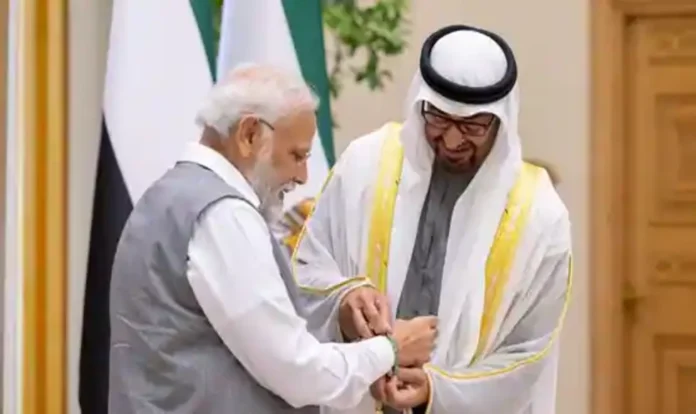In a historic move, the United Arab Emirates (UAE) has become the first country to include oil and gas in Rupee-Dirham trade, signaling a major shift in trade dynamics. Now, attention turns to India’s close allies Saudi Arabia and Qatar to see if they will follow suit and embrace local currency trade. The Modi government, during a recent visit to France and Abu Dhabi, secured its first long-term liquefied natural gas (LNG) contracts with French TOTAL and UAE’s ADNOC, marking a significant step in India’s energy diversification efforts.
Prior to these agreements, India’s only long-term LNG contract was with Qatar, amounting to 11.18 million metric tons annually, valued at USD 12 billion. Additionally, India imports approximately USD 30 billion worth of crude oil from Saudi Arabia each year. With the recent Rupee-Dirham currency settlement, facilitated by Reserve Bank of India (RBI) Governor Shaktrikanta Das and the Central Bank of UAE, the stage is set for a game-changing development in India’s trade relations.
The credit for this milestone on the Indian side goes to Governor Das for spearheading the necessary efforts before signing the Memorandum of Understanding (MoU) with the Central Bank of UAE. On the UAE side, President Sheikh Mohammed bin Zayed Al Nahyan deserves recognition for demonstrating confidence in the Indian economy and currency. The close relationship between Prime Minister Narendra Modi and President MBZ has played a crucial role in the decision to conduct bilateral trade, totaling USD 85 billion, including USD 36 billion in oil and gas, exclusively in the local currency.
The success of this groundbreaking initiative will be tested in the coming days as oil transactions are conducted through the local currency settlement route. Moreover, the signing of the MoU on bilateral cooperation between RBI and the Central Bank of UAE for interlinking payments and messaging systems is set to integrate India’s Unified Payments Interface with the UAE’s Instant Payments Platform. This integration will facilitate direct card transactions between the two countries’ payment systems, eliminating the need for reliance on third-party networks. The ripple effects of the Local Currency Settlement (LCS) system between India and the UAE will be felt across the Middle East and the Indian sub-continent, with other countries likely to follow suit.
While Nepal and Bhutan are already linked with the Indian currency, the LCS could be a game-changer in trade with Bangladesh, particularly under the leadership of Sheikh Hasina. The LCS goes beyond financial transactions, as it fosters closer connections between businessmen and women by cutting out the cumbersome dollar and petro-dollar routes. Overall, the Rupee-Dirham trade deal between India and the UAE marks a significant turning point in international trade dynamics. It not only strengthens bilateral ties but also sets a precedent for other nations to explore local currency trade, promoting greater economic independence and fostering stronger relationships in the process.


